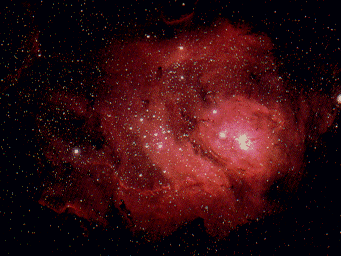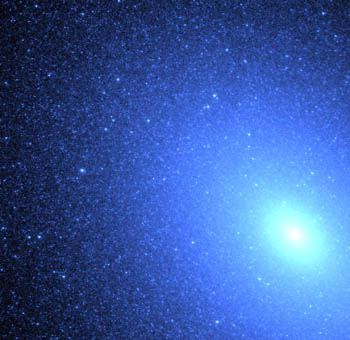Different Types of Stars
The Sun is an average sized yellow star. It is about 1 million kilometres wide and is about 4.5 billion years old. However, when the Sun gets older (in about 5 billion years), it will no longer be an average-sized yellow star. Instead, it will increase in size and become a Giant star, before using up almost all its energy and collapsing into a Dwarf Star. Below is a list of the different types of stars:
Dwarf Stars
The nearest star to the Sun, Proxima Centauri, is a Red Dwarf star. It is a star with a diameter (width) less than half the diameter of the Sun, a surface temperature about 2000 °c to 3000 °c cooler. The Sun is also about 10,000 times brighter than Proxima Centauri. White Dwarfs are similar to Red Dwarfs, except that their surface temperatures are much higher, and shine white instead of red. When the Sun comes to the end of its life, it will become a White Dwarf. It will be much smaller than it is now, not quite as bright but twice as hot. Its matter (particles) will be more densely-packed together. There are also Black Dwarfs. These are stars that we cannot see, which have used up their energy for producing light, but are still closely-packed but still have a strong gravitational pull.
Neutron Stars (Pulsars) and Black Holes
A neutron star is a very small star, perhaps only 20 kilometres across, which is just as heavy as the Sun is now. Its matter is extremely densely-packed together. When a Giant star collapses as it dies, it causes a huge explosion called a Supernova. This explosion, producing vast amounts of cosmic dust and appearing like another nebula in space, ends with the star shrinking or totally disappearing. A neutron star, which spins very fast, gives out huge pulses of radiation. This is why it is known as a Pulsar. If it does completely disappear it becomes a Black Holes, appearing to suck in objects orbiting or approaching close to it.

Average-sized Stars
Most average-sized stars, like the Sun, are about half-way through their life. They have surface temperatures about 6000°c and glow a bright yellow, almost white, colour. They will swell up to become a Giant stars, and then shrink to become White Dwarfs.

Blue-White Stars
Some stars use up their hydrogen quicker than other stars. The Sun uses up its hydrogen steadily, and will have a life of about 10 billion years. Stars which burn up their hydrogen supplies quickly are much hotter than Sun-like stars. This heat causes them to glow bright blue, or blue-white. Sirius is the brightest star in the sky after the Sun, and has a surface temperature of about 10,000°c and is two and a half times bigger than the Sun. These hot stars are not necessarily always bigger than the Sun. They are just hotter and shine brighter.
Supergiants
An old Blue-white star becomes a Supergiant. They expand, just like average-sized stars expand to become Giant stars. Because they are beginning to run out of hydrogen, they cool down and glow a more orangey colour. A star called Betelguese is extremely old, but also extremely big. In fact, it is 500 times wider than the Sun and would, if it was at the centre of the Sun's Solar System, be big enough to stretch nearly to Jupiter. This giant star will one day collapse in a huge explosion called a supernova and will become a neutron star or maybe even a Black Hole.